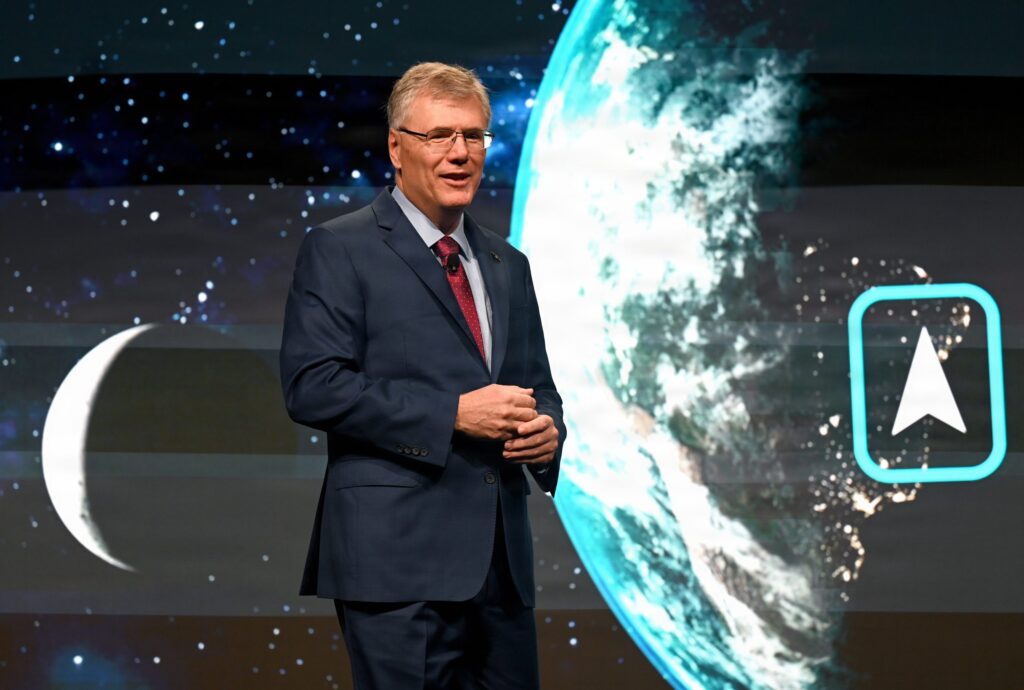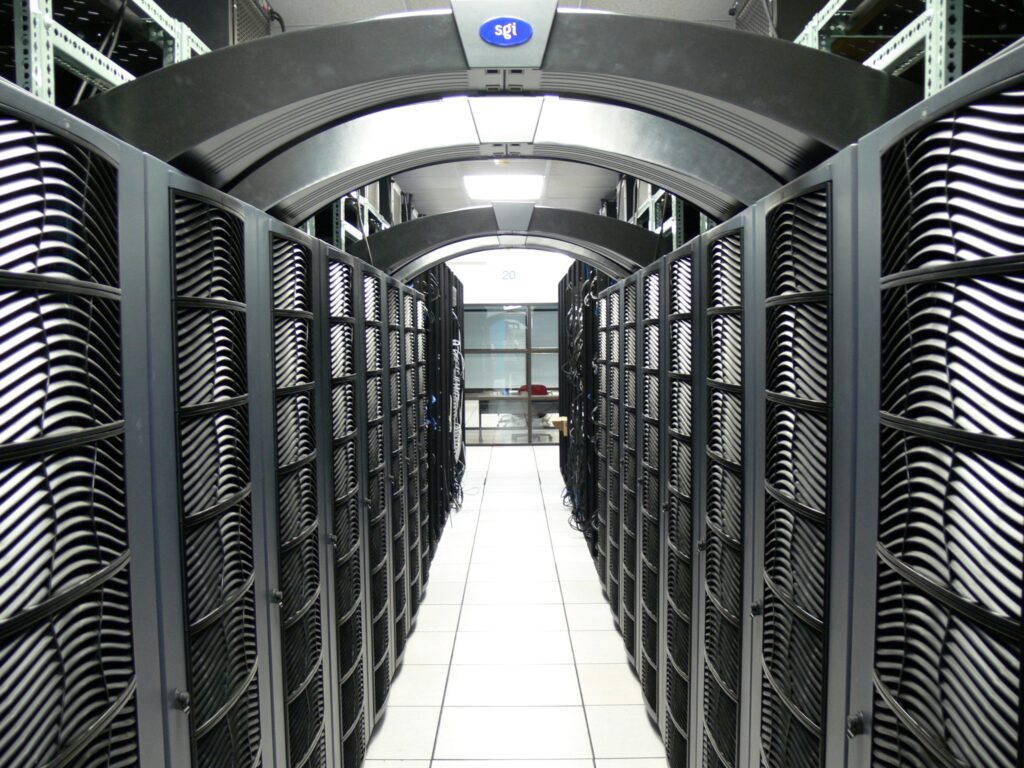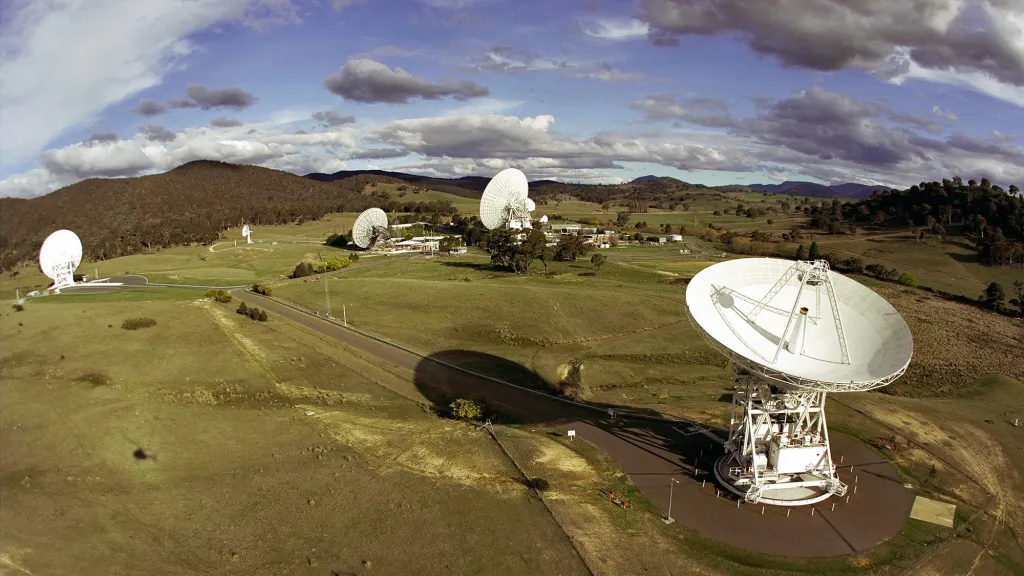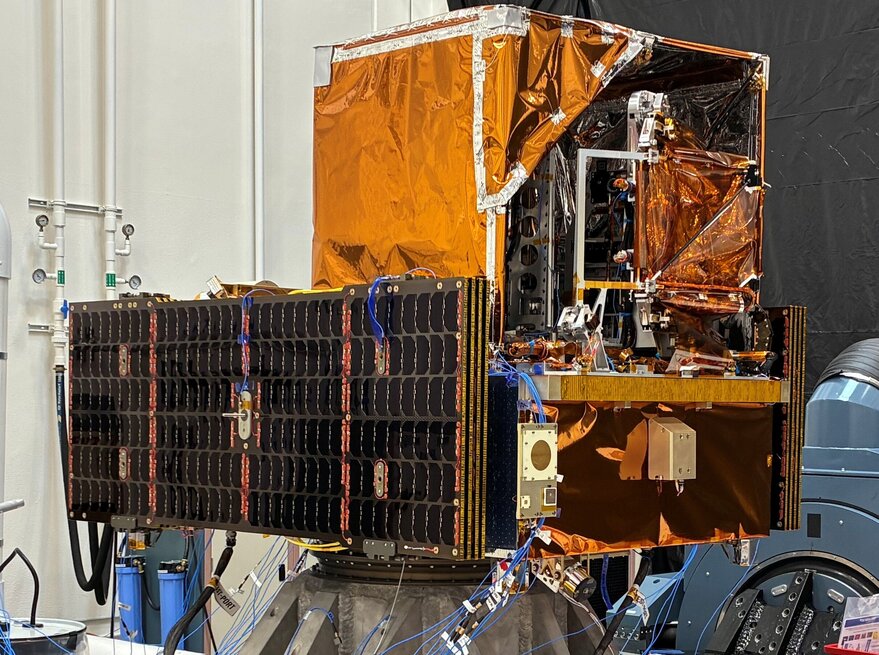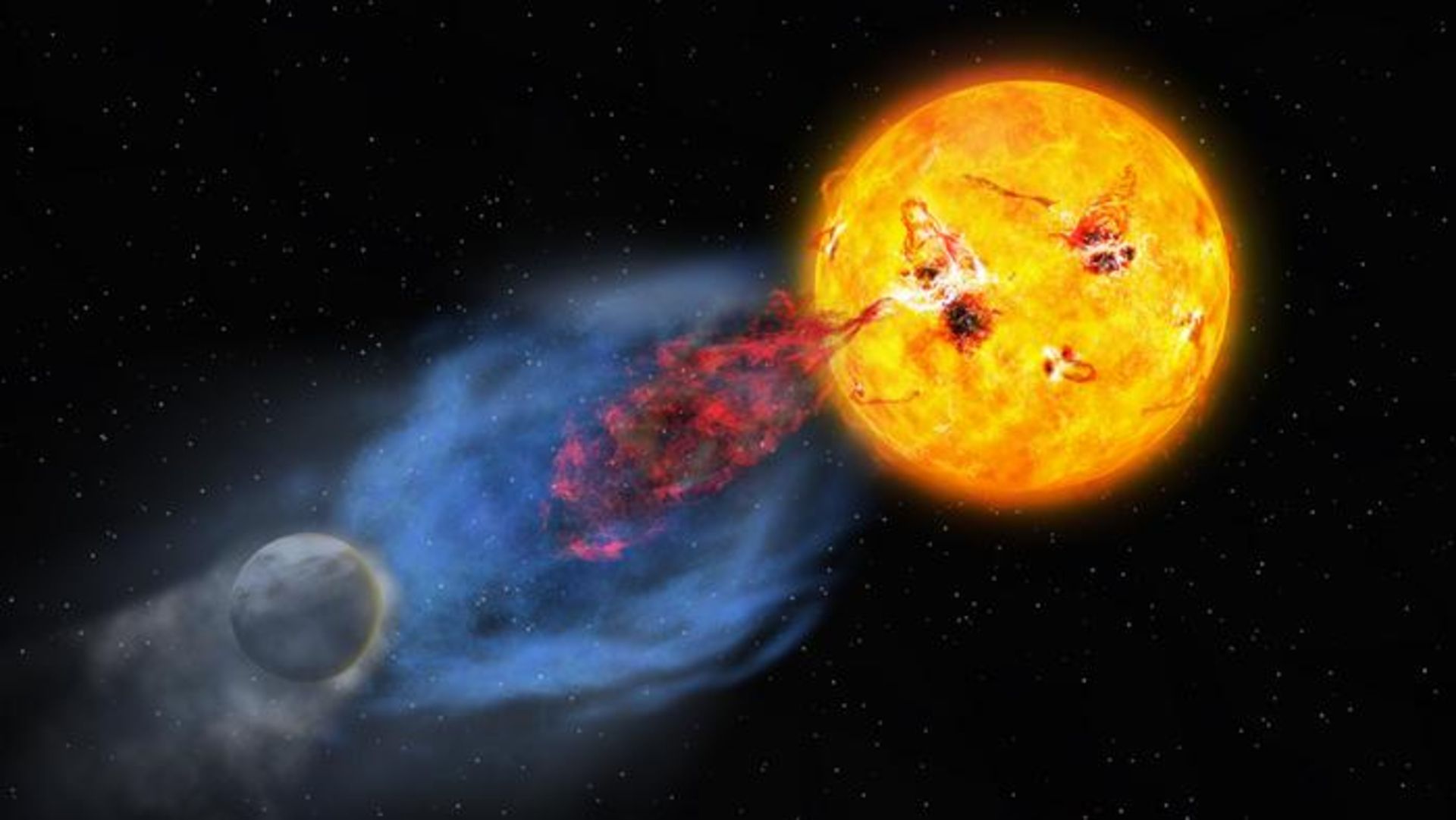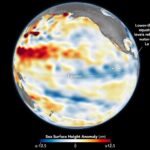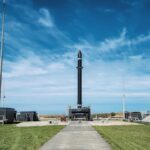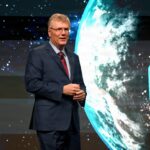Now Reading: Inside the new age of space domain awareness
-
01
Inside the new age of space domain awareness
Inside the new age of space domain awareness
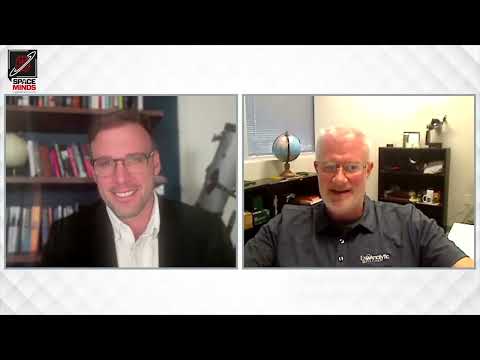
In this episode of Space Minds, host David Ariosto speaks with Doug Hendrix, co-founder and CEO of ExoAnalytic Solutions — a company born from three physicists’ passion for solving hard problems in space.
Hendrix shares how ExoAnalytic grew from missile defense algorithms to building a global telescope network that tracks thousands of objects in orbit, providing vital insights into space debris, collisions, and threats. Together, they explore how commercial innovation, AI, and automation are reshaping space domain awareness, the rising challenges of orbital congestion, and what a future space conflict might really look like. Hendrix also reflects on how science fiction and the Apollo era first inspired his lifelong pursuit of the final frontier.
Show notes and transcript
Click here for Notes and Transcript
Time Markers
00:00 – Episode introduction
00:31 – Welcome Doug
00:50 – Origin story
03:47 – Starting the company
05:29 – The shifting geopolitical landscape
08:53 – Contract models
10:23 – Space domain awareness & Intelsat 33E
13:17 – A global telescope network
15:04 – Debris size being tracked
18:21 – Public vs. private responsibility
21:17 – Government mandates
22:56 – Our reliance on space assets
25:21 – AI, automation & the future of SDA
28:38 – The human element in the equation
30:05 – Hypersonic missiles & humans in the loop
32:45 – Personal inspiration
Transcript – Doug Hendrix Conversation
This transcript has been edited-for-clarity.
David Ariosto – Doug Hendrix, you are the co-founder and CEO of ExoAnalytic Solutions, and you also just so happen to have a PhD in physics from the University of California, Irvine. Thanks so much for joining us here on Space Minds.
Doug Hendrix – Thank you. Thanks for having me.
David Ariosto – On that last point, I kind of want to get into that, because your company, ExoAnalytic Solutions, was founded back in 2008 by three career physicists. And it’s interesting to me in the context of the emerging commercial space industry — this new era that’s relatively recent, at least in the history of space — that the MBAs of yesteryear don’t populate as many space companies as one might expect. There are a lot of PhDs instead. I wonder if you can get into that — not only ExoAnalytic’s origin story, but how it fits into the broader commercial shift.
Doug Hendrix – Going back a bit further, I got my start in the industry in the late ’80s working on nuclear weapons effects and hypervelocity impacts for programs like THAAD and Patriot. Then the Berlin Wall came down, and the writing was on the wall for everything I was doing. So I went back to grad school and started my PhD in space plasma physics.
I’ve always liked having multiple things going on, so during grad school I started writing a multiplayer online space combat game. I eventually published it. I’ve always had an interest in space.
When I finished graduate school — where I’d studied with one of my co-founders, Mike Van Tiel — I returned to the defense industry in missile defense and met my other co-founder, who had just finished her master’s in physics. We worked together, eventually brought in our third co-founder — I actually rescued him from the gravity lab at UC Irvine — and together we worked on algorithms for missile defense interceptors and remote sensing for tracking missiles.
We noticed that “Tech 1.0” was booming in the ’90s, and all my undergrad friends in Silicon Valley were becoming millionaires on stock options. We decided that with everyone leaving defense for tech, we’d be the only smart ones left in defense — that was our plan.
When the company we worked for was sold, we branched out and started our own. Did we know how to run a business? Almost nothing. If you’re starting a company, you need three people: one to build things, one to sell things, and one to run things. Holly, our third co-founder, became the one who ran the nuts and bolts. We were faking it at first.
Space was in a bit of a lull. Missile defense was waning, but we focused on developing the best technology for the hardest problems. Around that time, General Shelton, then commander of Space Command, said he needed real-time command and control and automation to fight a future space war. He didn’t say “AI,” but that’s what he meant. We realized that was exactly what we’d been doing in missile defense. So we decided to take all that technology and apply it to space surveillance.
David Ariosto – You talk about the shifting geopolitical landscape. I’d venture to guess this is something of a heyday for missile defense, with new technologies from China, Russia, North Korea, and Iran — and with AI reshaping the defense industry. Would you say that’s a fair characterization?
Doug Hendrix – Yes, it really is. For the last decade we’ve been watching events in space — especially from China and Russia — ramping up and demonstrating capabilities on orbit. Only recently has awareness really hit across the U.S. space enterprise. The threat is real; that’s why we have a Space Force.
We’re fortunate that around the same time EXO was founded, a small rocket company called SpaceX was also founded. They showed how a commercial company could innovate outside the fences and still contribute to national security. They’re now the largest launcher for U.S. national security — and the world. With Starlink and Starshield, they’ve proven that commercial innovation can work. And the government has begun to realize that.
David Ariosto – And cost-plus contracts are kind of a thing of the past too. For listeners who might not know, can you explain what cost-plus means and why it’s been criticized?
Doug Hendrix – Sure. Cost-plus means the government reimburses you for whatever it costs, often baking in delays and overruns. Big contractors thrive on that model. Smaller ones struggle to stay afloat.
Now we’re seeing firm fixed-price and performance-based contracts. For example, the space-based interceptor for “Golden Dome” is built around companies pitching ideas, investing their own funds, and if selected, they move on to the next phase and eventually a production contract. It’s a great way to tap industry innovation.
David Ariosto – A lot of what you and your company do involves dual-use technology — both civilian and defense. I want to point to the Intelsat 33E satellite that broke up in geostationary orbit last year. You were quoted at the time saying ExoAnalytic had tracked 57 pieces of debris. Can you walk us through what happened that day and what space domain awareness really means?
Doug Hendrix – Sure. I woke up on a Saturday morning, checked our system — it’s always running — and saw chatter about Intelsat 33E. A customer said it wasn’t responding. I pointed a telescope at it and found six objects where it used to be. We realized something catastrophic had happened.
We have a global network of 400 telescopes, fully automated, that updates catalogs, looks for conjunctions, and warns customers. That day I manually analyzed what was happening — before brunch I’d identified 57 objects. Later we tracked over 500 pieces, and today more than 1,000. Some were as small as softballs, others as big as beach balls, moving up to a kilometer per second. It was an explosion. Within days, the debris had encircled the globe, increasing the GEO population by about a third.
David Ariosto – To give listeners context, even a fleck of paint can puncture a spacesuit. So when you’re talking about beach-ball-sized debris, what kind of danger are we talking about?
Doug Hendrix – These were in GEO, about 36,000 kilometers up. Nothing reenters from there. Relative velocities of a kilometer per second are enough to destroy a satellite. Within two days, debris had spread around the planet. It’s a real danger. And remember, we still don’t know where every object is — which is a big challenge for space domain awareness.
David Ariosto – Given cuts at NASA and reduced resources for tracking debris, how do you balance the private sector’s profit motives with society’s need for a safe orbital environment?
Doug Hendrix – Great question. We don’t make money tracking debris, so we track what we can. No one — government or private — is funding the rest. There has to be a business case for expanding coverage. NASA’s Orbital Debris Office and the Office of Space Commerce are trying, but funding is tight. Space Force takes it seriously but mostly in the context of defense.
If we ever had a kinetic conflict in space, the Intelsat 33E breakup was a preview. One satellite exploding creates chaos; imagine dozens in wartime. It would be catastrophic.
David Ariosto – That’s a fascinating point — and the global economy is so reliant on space assets, especially GPS. With everyone building their own systems now, does that sense of shared security still exist?
Doug Hendrix – I think of it like Cold War nuclear deterrence — everyone loses if satellites start getting blown up. China, Russia, Europe — they all rely on these systems now. But unintentional debris is still a huge risk. The problem will worsen in low Earth orbit as mega-constellations like Starlink, OneWeb, and Amazon’s Kuiper expand. It’s going to get very crowded.
David Ariosto – So looking ahead — technologies like AI on orbit, machine learning, quantum sensing, and non-optical sensors — how do these change the space domain awareness landscape, and what does that mean for ExoAnalytic?
Doug Hendrix – The numbers are growing, and we’re not tracking everything. We’ll need more sensors — on the ground and in space — optical, passive, radar, and more. The more data we have, the more automation and AI we’ll need to process it.
Our 400 telescopes generate about 20 observations per second. We handle that fine, but to truly monitor all orbits, we’d need to scale that by 100 or 1,000 times. That’s where AI, automation, and machine learning come in — to process massive amounts of data quickly and reliably.
David Ariosto – You hope “without mistakes,” right?
Doug Hendrix – Right — there are always mistakes. Our algorithms flag anomalies for human review. About one percent of what we process is seen by a human; 99 percent isn’t. We’re conservative because our reputation depends on reliability. But for life-and-death defense systems, humans still need to be in the loop — at least at the end.
David Ariosto – But when we talk about hypersonics — where a missile can cross continents in under ten minutes — how do you even keep humans in that loop?
Doug Hendrix – You really can’t. Systems like Patriot and Iron Dome have to be automated as much as possible. The human role is setting parameters, not reacting in real time. You’ve only got minutes — sometimes seconds. Accuracy has to be nearly perfect. Until interceptors are cheap enough to fire many at once, efficiency is everything. My whole career in missile defense has been about maximizing the probability of kill under those constraints.
David Ariosto – So — lots of missiles fired, humans out of the loop, algorithms in charge. Got it.
Doug Hendrix – (laughs) Not exactly comforting, I know — but yes, they’re always overhead.
David Ariosto – Let’s end on a more uplifting note. Outside of the work — what drives you? What got you into physics and space? What still inspires you about this next frontier?
Doug Hendrix – I was born in 1966, and for me, the most interesting thing in the world was the Apollo program. Then I learned about Gemini and Mercury — the whole space program of the ’60s launched by JFK. I wanted to be an astronaut. Then Star Wars came out — the most amazing thing ever — and then Battlestar Galactica. I wanted to be a Viper pilot on a Battlestar.
I thought I’d go to the Air Force Academy, become a pilot, then an astronaut — but I didn’t have the discipline. So I went to UC Berkeley and majored in physics because it was the Swiss Army knife of majors. It taught me how to solve problems and simulate space systems.
I was also deeply inspired by science fiction — especially Robert Heinlein’s Time for the Stars and The Moon Is a Harsh Mistress. They made me dream about interstellar travel. We’re too young as a civilization to achieve it yet, but that’s still what fascinates me. Meanwhile, I’m doing the next best thing — contributing to technologies that help humanity navigate and protect space.
David Ariosto – PhDs, sci-fi lovers, the big dreamers — they really do define the new commercial space. Doug Hendrix, co-founder and CEO of ExoAnalytic Solutions, it’s been a pleasure having you on Space Minds.
Doug Hendrix – Thank you very much. I appreciate you taking the time and inviting me on.
About Space Minds
Space Minds is a new audio and video podcast from SpaceNews that focuses on the inspiring leaders, technologies and exciting opportunities in space.
The weekly podcast features compelling interviews with scientists, founders and experts who love to talk about space, covers the news that has enthusiasts daydreaming, and engages with listeners. Join David Ariosto, Mike Gruss and journalists from the SpaceNews team for new episodes every Thursday.
Watch a new episode every Thursday on SpaceNews.com and on our YouTube, Spotify and Apple channels.
Be the first to know when new episodes drop! Enter your email, and we’ll make sure you get exclusive access to each episode as soon as it goes live!
Space Minds Podcast
“*” indicates required fields
Note: By registering, you consent to receive communications from SpaceNews and our partners.
Stay Informed With the Latest & Most Important News
Previous Post
Next Post
-
 012024 in Review: Highlights from NASA in Silicon Valley
012024 in Review: Highlights from NASA in Silicon Valley -
 02Panasonic Leica Summilux DG 15mm f/1.7 ASPH review
02Panasonic Leica Summilux DG 15mm f/1.7 ASPH review -
 03From Polymerization-Enabled Folding and Assembly to Chemical Evolution: Key Processes for Emergence of Functional Polymers in the Origin of Life
03From Polymerization-Enabled Folding and Assembly to Chemical Evolution: Key Processes for Emergence of Functional Polymers in the Origin of Life -
 04How New NASA, India Earth Satellite NISAR Will See Earth
04How New NASA, India Earth Satellite NISAR Will See Earth -
 05And Thus Begins A New Year For Life On Earth
05And Thus Begins A New Year For Life On Earth -
 06Astronomy Activation Ambassadors: A New Era
06Astronomy Activation Ambassadors: A New Era -
07SpaceX launch surge helps set new global launch record in 2024













